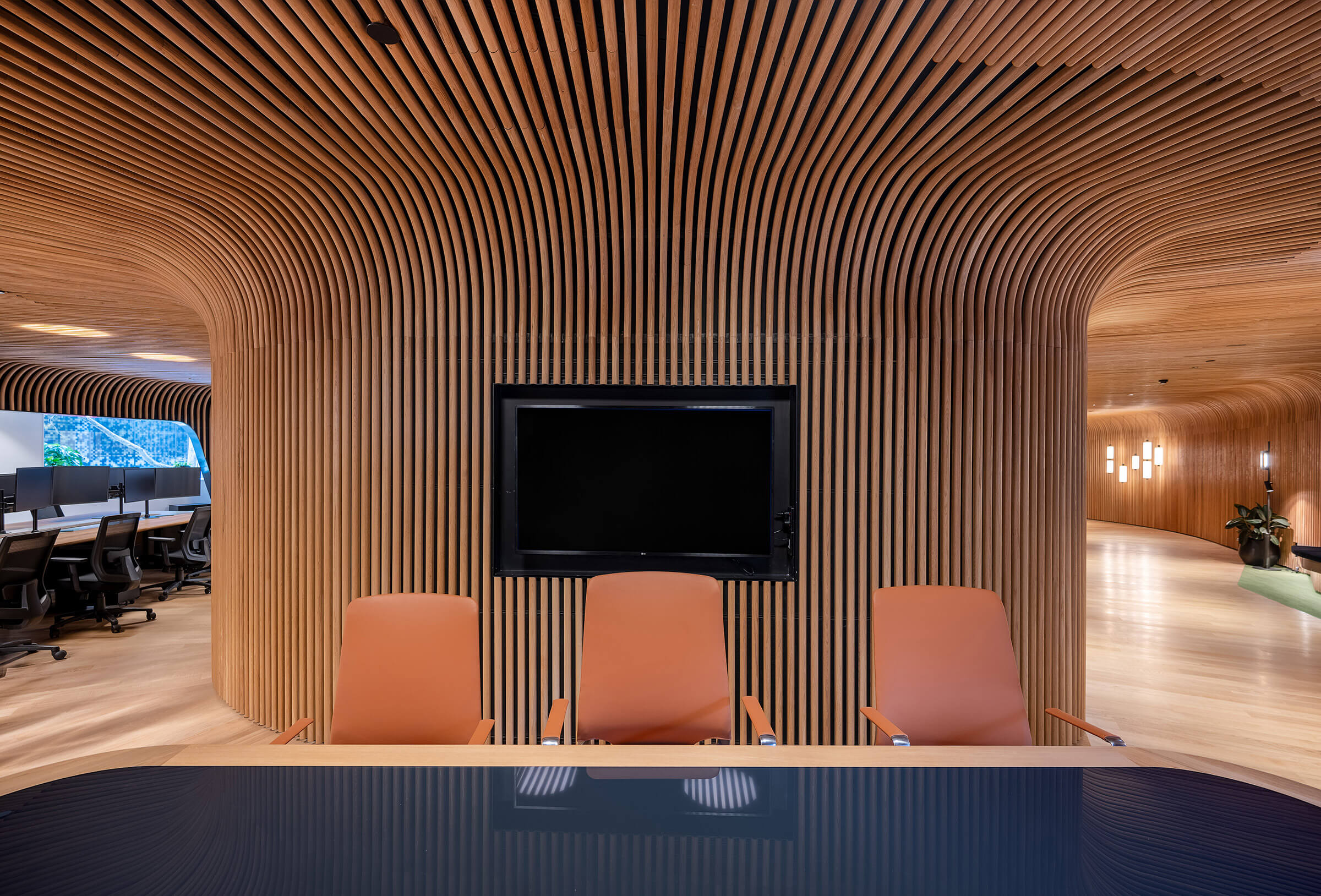How is Timber Curved?
Creating curved timber is a complex process and is often difficult to achieve on a commercial scale. Thankfully, our curved timber Click-on battens give architects a buildable and affordable solution for curved concepts. Curbed timber is an increasingly popular design choice due to the visual appeal and fluidity they bring to a space.
Sculptform curved timber is moulded in our Australian factory by our team of experts. The processes we have adopted to curve our timber products include Steam Bending and Kerfing, which we will delve into more below.
Photos included in this editorial are of the Sculptform Design Studio, which included many curved timber integrations to achieve its design.

Curving Timber
Understanding what timber actually is, makes the curving process a lot easier to understand. Timber is made up of millions of fibres that run through its entire length. The fibres are visible by the naked eye and you can also see where fibres have bonded together to create structural integrity. A naturally occurring polymer called lignin is a powerful natural glue that bonds the timber fibres together. When timber is exposed to our curving processes the lignin is compromised allowing curving to occur.



Steam Bending
Suitable for interiors only, our process takes the traditional art of steam bending timber and applies it on a much larger commercial scale. Through a complex process involving steam and heat, we can form Spotted Gum and American Oak timber (in block and dome profiles) to the required shape without resistance.
This method creates seamless transitions between walls and ceilings and allows designers to create their curving vision unrestricted. While steam-bent timber lessens the number of joins required for a curved application, some joins are still required. Check out our join line options.
You can cut a curved shape out of a piece of timber, but that compromises the strength and durability of the timber and produces waste. The benefit of steam bending is that it manipulates the wood so that the grain continuously flows with the curve across the whole length. This is especially important on structural elements, where the curved piece is going to be supporting weight and taking stress.
While the steam bending and cooling process ensure the timber will hold the curve, grain and density variations can affect the overall curve. This is unavoidable due to the natural variation in timber.
For more technical information on steam-bent timber, go to our Curved Timber Technical Info page.



Kerfing
When a sawblade cuts into a piece of timber this is called a kerf. Many of these kerf cuts along a timber batten provides the timber with more malleability so that it can be curved, this is what is referred to as kerfing.
The process of kerfing involves cutting along a timber batten with a saw blade multiple times in very close proximity. Each cut is the width of the saw blade and its teeth, so a very narrow cut
Kerfed pieces of timber are suitable for interiors and sheltered exteriors. Timber species that we can curve through our kerfing method include Spotted Gum, American Oak and Australian Ash in block profiles.
For more information on kerfed timber, go to our Curved Timber Technical Info page.

Pictured: Arkadia designed by DKO+Breathe Architecture.
There are many factors and pro’s and con’s for both steam-bending and kerfing timber. So to find out which option is best for your curved timber concept, visit our editorial; how to choose the best curved timber option for your application.
Have any questions?
Our clients are at the heart of every project. It’s our job to deliver on the big picture and the smallest detail. We’re your proactive design partner – we’ll listen to what you really need and work with you to make sure the job gets done right.
If you have any questions about our curved timber options, you can contact us below or give us a call on 1800 008 828.
 Price & Spec
Price & Spec



